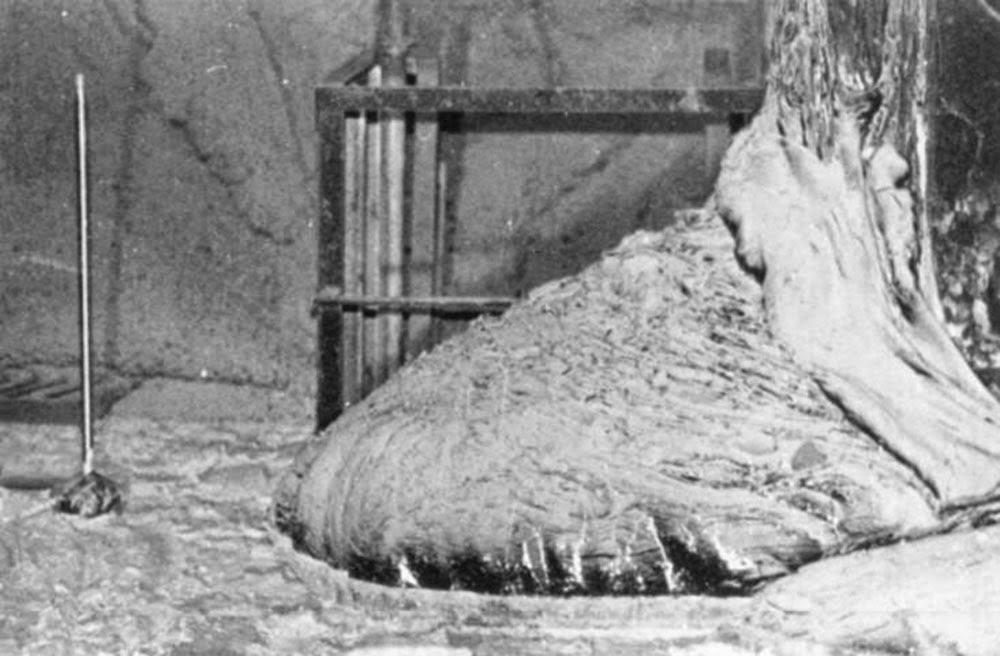
April 26th, 1986. The day of the worst nuclear accident in history: the Chernobyl meltdown.
While the official death toll was only 54, tens of thousands of people had their lives mutated by the radiation that billowed out of the remains of reactor 4, and we are still dealing with the fallout of the incident.
For many, the accident is buried in the past. The radiation levels in Pripyat, the town located 2 kilometers away from the plant where many of its workers once lived, have fallen to the point where people are able to reclaim the town’s abandoned buildings and live where ghosts once stood (if they are willing to brave the risk of cesium-137 poisoning).
However, though people might live in Pripyat, the Chernobyl power plant remains highly radioactive. And no area in the bowels of the plant is more deadly than…

The Elephant’s Foot.
In 1996, more than ten years after the incident, the Elephant’s Foot emitted less than 10% of the radiation it had emitted after the accident.
The mass of corium had a radiation level of less than 10% of what it had directly following the meltdown. Despite this, the radiation it emitted was enough to kill after 30 seconds of exposure.
Thirty years after the accident, the levels had fallen enough to kill after 300 seconds. A mere five minutes of exposure.
Now, if I’ve done my math correctly, the levels should have fallen enough to allow for 3000 seconds of exposure. 50 minutes. Enough time to have the adventure of a lifetime.
Since the Elephant’s Foot was discovered in 1996, no soul has been brave enough to breach the depths of reactor 4. My plan is to be the first.
My name is Alexander Tate. I’m going to be the one to discover what’s inside the Elephant’s Foot.